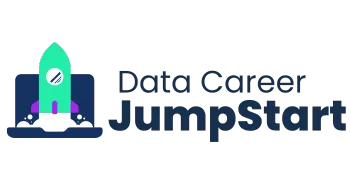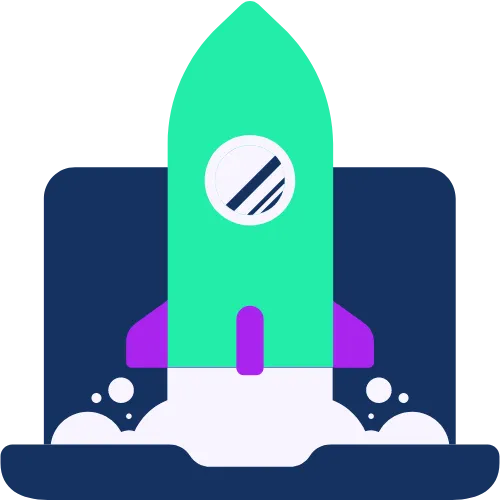
🔁 How I Would Become a Data Analyst In 2025 (if I had to start over again)
If I woke up one morning and suddenly lost ALL my experience in data and HAD to start ALL OVER, here are the 9 steps I’d take to become a data analyst as quickly as possible in 2025 👇
1. Exploring the Various Data Analytics Job Opportunities
In the data world, there are way more job titles than just “Data Analyst”. There’s:
Business Analyst
Financial Analyst
Marketing Analyst
Operations Analyst
Pricing Analyst
Business Intelligence Engineer
Qualitative Analyst
Data Viz Specialist
Product Analyst
And a bunch more.
I’d first try to see which of these might match my prior experience best & select it as a target
2. Pinpoint the Necessary Skills as a Data Analyst
Before going straight into learning data skills on an online platform, I’d actually try to figure out exactly what I need to learn. I’m lazy so I don’t want to learn more than necessary.
How would I know what to learn? By studying the crap out of job descriptions for roles I picked out in step 1. Or I could just trust what the research in this article says here.
Short answer? ETS.
Excel. Tableau. SQL.
You can remember it by “Every Turtle Swims”.
These three amigos are your best bet—the simplest, easiest, and most kick-butt starting point. It's like reaching for the low-hanging fruit; they're all easy to learn & used the most in the field.
3. Create a Plan to Gain Hiring Manager’s Trust (Projects)
I wouldn’t be able to land a job because I wouldn’t have experience.
But I couldn’t get experience until I landed a job.
A real frustrated “chicken or the egg” scenario.
So I’d need to create my own experience, or at least some tangible evidence to get hiring managers to trust me.
So I’d create projects.
They’d serve as my “experience”.
4. Learn The Basic Data Analytics Skills (and only the basics)
This is when I’d start actually learning stuff. Not before figuring out my target role, figuring out what’s required for that role, and realizing I need projects.
I’d learn by building projects on real data.
Where would I get real data? I’d follow this simple guide here.
But if I wanted high-quality projects with guidance, I’d consider something like The Accelerator.
5. Create a Home for My Projects (Data Portfolio)
Of course, once I built the project, I’d need to have a home for them. Projects can’t serve as evidence if people can’t see them.
I’d stay away from GitHub (too messy, too ugly, too complicated).
Instead, I’d shoot for something like Carrd or LinkedIn.
6. Optimize My LinkedIn and Resume for Success
When I’d be applying for jobs, my LinkedIn and resume would be the only two things I can really control.
I’d optimize the crap out of these to PASS THE ATS. That’s the only purpose of my resume—get me past the ATS.
So I’d try to:
Keyword stuff
Utilize action verbs
Quantify my achievements
Mention my desired role title AMAP (as much as possible, I think I made that up? Is that a term)
7. Start Applying For Jobs Like a Scientist
Next, I’d start applying for jobs.
I’d start early and often, realizing it’s a numbers game. Rejection sucks. But 99.99% of job seekers will receive DOZENS of rejections. It’s just part of the process. I’d try to not take it personally and just move on to the next one.
I’d also track all my applications—that way I could approach it from a data-driven approach.
8. Start Networking Like a Friend
Since I’m starting from scratch, I’d assume I don’t have many contacts in the data world. Darn it.
But I’d start with the contacts I do have.
So I’d simply just follow “The Phone Book Method.” Nothing fancy, but it’s a start.
9. Prepare for Technical and Behavioral Interviews
Lastly, once I’m building projects and posting on my portfolio, applying for jobs, and networking as a friend, interviews are bound to start soon.
I’d want to make sure I’m prepared as h*ck.
I’d practice technical interviews on StrataScratch & behavioral interviews on InterviewSimulator.
Full disclosure, I’m an affiliate for StrataScratch and I created InterviewSimulator, so I’m biased but I do think these are the best tools on the market for data interview prep!
10. Wait For Offers to Trickle In
If I successfully did steps 1-9, it’s only a matter of time before an offer would come.
I would be important for me to remember that luck plays a role here, but the more and the better I follow steps 1-9, the luckier I’d get.
I’d keep repeating steps 1-9, until I get the dream offer.
I hope these 10 steps are useful to you!
You’re welcome to follow these steps on your own, but if you’d like a step-by-step plan, a coach helping you, and a community supporting you, consider joining my all-inclusive data analyst land-a-job bootcamp, The Accelerator.


